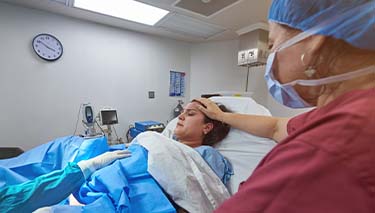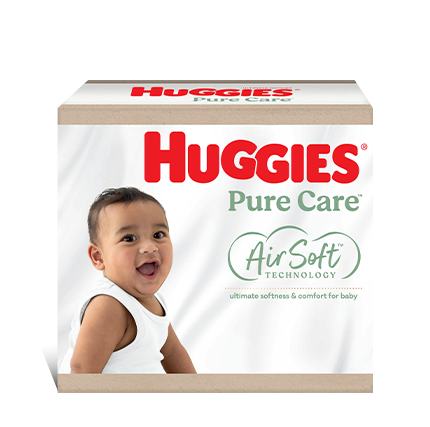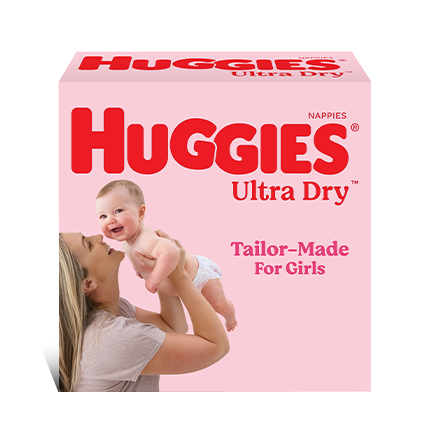Water breaking, breaking the waters, water broke, membranes rupturing – they all mean the same thing. Essentially water breaking means the bag of waters surrounding the baby breaks and watery, warm liquid comes out from the mother’s vagina.
You’ll hear lots of stories from other women about their experience of their water breaking, but what happens when your water breaks will be unique to you.
I think my water broke, what’s it like?
The amniotic fluid is usually pale and clear, sometimes with a yellow tinge. Occasionally there is a small amount of blood as well, especially if a mother has a mucousy show at the same time. It’s also possible for the waters have a green tinge. This is caused by the baby pooing while it is still inside.
Should I be worried if my water broke?
No, but this is a sign that your labour has started. Contact your maternity care provider and follow their advice about what’s right for you and your baby.
Membranes and layers of tissue form the amniotic sac. And it is in this sac which the baby and the fluids are contained. After the baby is born, the membranes come away with the placenta.
Amniotic fluid is actually made from a combination of the mother’s plasma and the baby’s urine. It plays an important role in cushioning the baby and helps with the development of the baby’s gut.
When do the waters break?
Water breaking can happen at any time – sometimes when at a more convenient time and place than others. It can happen before labour begins, at the start or, during labour. There is no one predicable time for the waters to break.
Many women have an Artificial Rupture of Membranes (ARM). This is when a hook is used to snag and tear the membranes so the amniotic fluid leaks away. An ARM is done by a midwife or doctor in a maternity hospital. Around 15% of women experience a rupture of membranes before they go into labour.
How do the Water’s Break?
We’re not entirely sure what causes the waters to break. Some researchers feel there is a hormonal ‘message’ communicated from the baby’s brain to the mother’s body for her to start labouring. As pregnancy advances, the membranes stretch. Closer to term it’s easier for the membranes to tear, causing the amniotic fluid to leak away.
What does it feel like when the water breaks?
One good thing about the water’s breaking is that it isn’t painful. In fact for many women, there’s no feeling at all. Lots of women report they just became aware of feeling wet, as if they hadn’t been able to control their bladder and wet themselves. Other women say that when their water broke, they felt like a balloon had popped between their legs.
Some women claim they actually heard a distinct ‘pop’, before a sudden gush of fluid came out between their legs. It’s also a common experience for mothers to feel a release of pressure when their waters break. This is more likely if contractions have started.
Not all women have such a distinct experience when their waters are breaking. Some have a slow leak, this can be more common if the baby’s head is well down and resting on the cervix. The baby’s head can act like a cork in a bottle top. When it’s not as firmly applied, the amniotic fluid escapes more easily. When moving around, changing position or standing up, there is often an increase in the leakage.
Water breaking signs
Sometimes it can be hard to tell if the waters have broken. Many women experience urinary incontinence towards the end of their pregnancy, caused by the weight of the baby on their bladder. During pregnancy, it’s also normal to have an increase in mucousy vaginal discharge. This combination of urine and discharge often leads to a feeling of dampness, especially as pregnancy advances.
Women who’ve had a few pregnancies, who carry large babies and are close to term, often need to wear a pad to absorb urinary leakage.
After a pop or even a gentle trickle of fluid, some women say that when they sit on the toilet, a gush of fluid came out of their vagina. This is different to having a wee because the liquid keeps trickling out, even if the bladder is empty. And because the fluid is coming out of the vagina it doesn’t feel like having a wee.
Is it wee or is it my water breaking?
If you’re unsure, have a smell. Wee has an ammonia type smell, especially if it’s concentrated. Amniotic fluid has more of a sweet, unusual smell, unlike anything else. It’s also impossible to control the flow of amniotic fluid, unlike the bladder.
A sensation of trickling, gushing, and/or constant dampness are all signs that the waters has broken. The flow of fluid can also increase when having a contraction.
What do I need to do when my water’s break?
The number one thing to do is not panic. Although your water breaking may come as a surprise, it’s a normal sign of labour starting. Sometimes the waters break before the baby is due. Premature Rupture of Membranes (PROM) is the term for the waters breaking before 37 weeks of pregnancy.
Use a towel or sanitary pad to absorb the amniotic fluid. Make a mental note of what time your water broke and how frequently you need to change your pads. Don’t use tampons or insert anything into your vagina. Avoid having sex when your water has broken.
Contact your maternity care provider and ask them what you need to do. You could be advised to stay at home and monitor any signs of labour. Alternately, they may suggest you go to hospital to be checked.
Written and reviewed by Jane Barry, midwife and child health nurse on 2/02/20
FAQ
It can be sensible to have some pads or old towels close by when you’re getting close to term. Some women put a plastic sheet on their bed to protect the mattress. Though you can’t predict when your waters will break, you can try to be organised if it happens either when you’re home or out.
This varies between individual women. At birth there is around 500mls- 1 litre of amniotic fluid. Not all of the fluid comes out when the waters break. Only some of the amniotic fluid is in front of the baby’s head, more comes out as the baby’s body is born.


Last Published* July, 2024
*Please note that the published date may not be the same as the date that the content was created and that information above may have changed since.





















